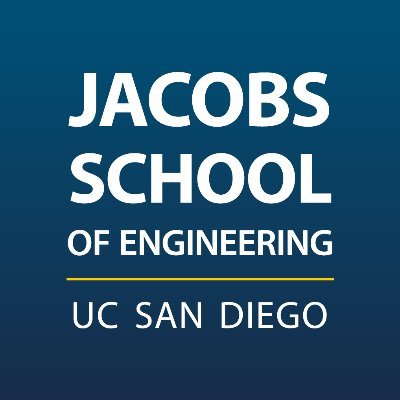News

June 7, 2010
Wireless Sensor Startup Wins UC San Diego $80K Entrepreneur Challenge
Wireless sensors that monitor your heart even though they do not actually touch your skin are at the center of UC San Diego electrical engineering PhD student Yu Mike Chi’s dissertation. This technology – and the plan for commercializing it – earned Chi and his Cognionics team the top spot in the UC San Diego Entrepreneurship Challenge. The prize includes $25K in cash for the startup and $15K in legal services. Full Story

June 3, 2010
TIES Honored, UC San Diego Named to Presidential Community Service Honor Roll
The University of California, San Diego has been named to the 2009 President's Community Service Honor Roll with distinction for the contributions UC San Diego’s students make to local, national and global communities on issues ranging from poverty to homelessness and environmental justice. This is the first year the university is on the Distinction List. Full Story

May 28, 2010
UCSD Fuels Clean Tech Cluster Through Innovation Challenge
Thirteen San Diego professors, students and research scientists who are developing technologies that will fuel the continued growth of the region’s “clean tech cluster” presented their new ideas over two days to a panel of eighteen high-tech reviewers. Full Story

May 28, 2010
Wireless Sensor Startup in $80K UC San Diego Entrepreneurship Challenge Finals
Wireless sensors that monitoring your heart or your brain even though they do not actually touch your skin are at the center of UC San Diego electrical engineering PhD student Yu Mike Chi’s dissertation. This technology – and the plan for commercializing it – earned Chi and his Cognionics team one of just five spots in the finals of the UC San Diego Entrepreneurship Challenge. On Wednesday June 2, 2010, Chi will present the Cognionics business plan at the final stage of the entrepreneurship challenge. At stake: $80,000 in cash and services for the UC San Diego startups. Full Story

May 20, 2010
Cell Phone Sensors for Toxins Developed at UC San Diego
A tiny silicon chip that works a bit like a nose may one day detect dangerous airborne chemicals and alert emergency responders through the cell phone network. If embedded in many cell phones, its developers say, the new type of sensor could map the location and extent of hazards like gas leaks or the deliberate release of a toxin. Full Story

May 20, 2010
Rolling Library and Robot Unicorn at Junkyard Derby 2010
Energy, excitement and screaming rose above a eucalyptus grove on the University of California, San Diego campus last Friday, April 14. But it had nothing to do with the 20,000 people coming to campus that night for the Sun God music festival. Instead, the vibe was coming from Junkyard Derby 2010. Full Story

May 18, 2010
Nineteen Projects Awarded Inaugural Calit2 Strategic Research Opportunities Grants
The first awards under a new research grant program at the University of California, San Diego will support a broad range of projects led by faculty members from 13 different departments and staff researchers participating in the California Institute for Telecommunications and Information Technology (Calit2). Full Story

April 20, 2010
Electrical Engineer Turned Solar Concentrator Inventor Wins Research Expo 2010
With his new solar concentrator design, electrical engineering Ph.D. student Jason Karp won the 2010 Rudee Research Expo Outstanding Poster Award. His winning poster “Planar Micro-Optic Solar Concentration” (#98) was one of 250 posters presented by Jacobs School graduate students on April 15th at the 29th Annual Research Expo at the UC San Diego Jacobs School of Engineering. Full Story

April 20, 2010
National Geographic Taps UC San Diego Students for Technology Solutions
A West Coast campus famous for its high-tech research is now becoming known for its global reach in cultural heritage. Faculty and students are already searching for the lost tomb of Genghis Khan and a masterpiece mural by Leonardo da Vinci not seen in 450 years, and now many more students will get the opportunity to blaze new technology trails in the name of global exploration. Full Story

April 14, 2010
Treat Acne with Coconut Oil and Nano-Bombs
A natural product found in both coconut oil and human breast milk – lauric acid -- shines as a possible new acne treatment thanks to a bioengineering graduate student from the UC San Diego Jacobs School of Engineering. On Thursday April 15, bioengineering graduate student Dissaya “Nu” Pornpattananangkul will present her most recent work on this experimental acne-drug-delivery system at Research Expo, the annual research conference of the UC San Diego Jacobs School of Engineering. Full Story
